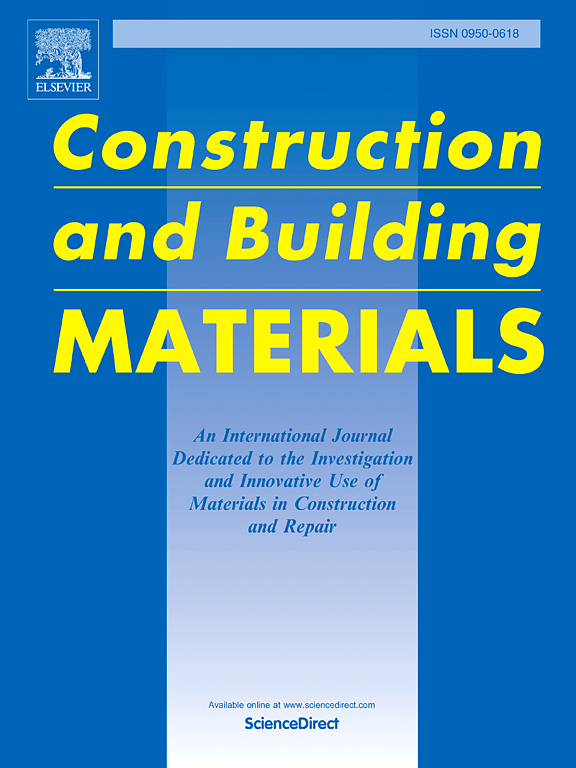揭示碱活化焚烧底灰-水泥复合体系的性能演变及反应机理
IF 8
1区 工程技术
Q1 CONSTRUCTION & BUILDING TECHNOLOGY
引用次数: 0
摘要
针对焚烧底灰(IBA)反应性不足导致资源利用效率低的问题,系统探讨了碱活化改性对IBA -水泥复合体系的影响机理。以NaOH和Na₂SiO₃为碱活化剂对IBA进行了活化,重点研究了不同活化剂配比对IBA力学性能的增强和微观结构的演化。结果表明,当碱激活剂中Na₂O含量浓度为0.8 %时,可有效激活IBA的潜在反应活性,促进水化产物中高强凝胶的形成,28天抗压强度较对照组提高25 %。值得注意的是,当Na₂O含量增加到1.6 %时,过量的碱不仅会破坏正常的水化过程,还会显著加剧碱-硅反应(ASR),导致试样性能严重退化。此外,还观察到Na₂SiO₃加速了试样的硬化,因此需要严格控制其用量在0.7-1.3 %的范围内。过量的剂量会导致过快的硬化,严重阻碍水化的完全进展,而低于0.7 %的剂量会导致性能改善不理想。本文章由计算机程序翻译,如有差异,请以英文原文为准。
Unveiling the performance evolution and reaction mechanisms of alkali-activated incineration bottom ash-cement composite systems
To address the low resource utilization efficiency of incineration bottom ash (IBA) caused by its insufficient reactivity, this study systematically investigates the influence mechanisms of alkali activation modification on ash (IBA)–cement composite systems. IBA was activated using NaOH and Na₂SiO₃ as alkali activators, with particular emphasis on the enhancement of mechanical properties and the evolution of microstructure under different activator ratios. Results indicate that when the Na₂O content concentration in the alkali activator is 0.8 %, the latent reactivity of IBA can be effectively activated, promoting the formation of high-strength gel in the hydration products, resulting in a 25 % increase in 28-day compressive strength compared to the control group. Notably, when the Na₂O content increases to 1.6 %, excessive alkali not only disrupts the normal hydration process but also significantly intensifies the alkali-silica reaction (ASR), leading to severe degradation of specimen performance. In addition, it was observed that Na₂SiO₃ accelerates specimen hardening, necessitating strict control of its dosage within the range of 0.7–1.3 %. Excessive dosage may lead to overly rapid hardening, severely hindering the complete progression of hydration, while dosages below 0.7 % result in suboptimal performance improvement.
求助全文
通过发布文献求助,成功后即可免费获取论文全文。
去求助
来源期刊

Construction and Building Materials
工程技术-材料科学:综合
CiteScore
13.80
自引率
21.60%
发文量
3632
审稿时长
82 days
期刊介绍:
Construction and Building Materials offers an international platform for sharing innovative and original research and development in the realm of construction and building materials, along with their practical applications in new projects and repair practices. The journal publishes a diverse array of pioneering research and application papers, detailing laboratory investigations and, to a limited extent, numerical analyses or reports on full-scale projects. Multi-part papers are discouraged.
Additionally, Construction and Building Materials features comprehensive case studies and insightful review articles that contribute to new insights in the field. Our focus is on papers related to construction materials, excluding those on structural engineering, geotechnics, and unbound highway layers. Covered materials and technologies encompass cement, concrete reinforcement, bricks and mortars, additives, corrosion technology, ceramics, timber, steel, polymers, glass fibers, recycled materials, bamboo, rammed earth, non-conventional building materials, bituminous materials, and applications in railway materials.
 求助内容:
求助内容: 应助结果提醒方式:
应助结果提醒方式:


